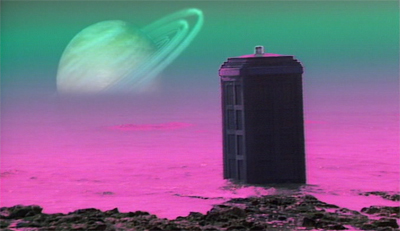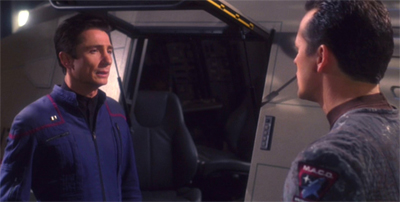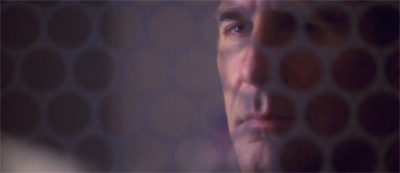To celebrate the fiftieth anniversary of the longest-running science-fiction show in the world, I’ll be taking weekly looks at some of my own personal favourite stories and arcs, from the old and new series, with a view to encapsulating the sublime, the clever and the fiendishly odd of the BBC’s Doctor Who.
The Trial of a Time Lord originally aired in 1986.
Hey, keep together. This is a great day for battle. A great day to die!
Does he always go on like that?
Afraid so.
-Ycranos, Tuza and Peri discover she apparently has a type
The Trial of a Time Lord loosely adheres to the structure of A Christmas Carol. If The Mysterious Planet can be seen as the “past” story, then Mindwarp is very clearly the “present” story. The BBC’s sudden “hiatus” for Doctor Who yanked the series suddenly out of Colin Baker’s first season, to the point where dialogue from Baker referencing the planned series opener had to be dubbed out. As a result, for the eighteen month gap, Colin Baker’s first full season in the role was a perpetual “present.” It was the last Doctor Who that had aired, and – as a result – it was the version of the show that first popped into people’s minds when they thought of the series.
So it seems fitting that The Trial of a Time Lord sees Colin Baker yanked directly from an adventure that looks like it could have been filmed as part of his first full year in the role. If The Mysterious Planet evokes a hazy and romantic past, a story constructed from familiar archetypes and plot points, then Mindwarp is a very clear acknowledgement of what the show had evolved into. Given the difficulties facing the programme after that problematic year, Mindwarp is the segment of this over-arching plot that needs to make the most robust defence of the show, or at least deflect the most criticism.
Despite some interesting strengths, Mindwarp doesn’t quite construct a convincing argument in favour of the show. More than that, though, its deflections prove a little weak.

Out of this world…
Continue reading →
Filed under: Television | Tagged: Christopher Ryan, Colin Baker, doctor, doctor who, Eric, Eric Saward, Glasgow, John Nathan Turner, Matrix, Mindwarp, Mysterious Planet, Peri, Philip Martin, Sil, Sixth Doctor, Time Lord, Torture, Trial of a Time Lord, Ultimate Foe, Valeyard, West Kilbride | 2 Comments »
































